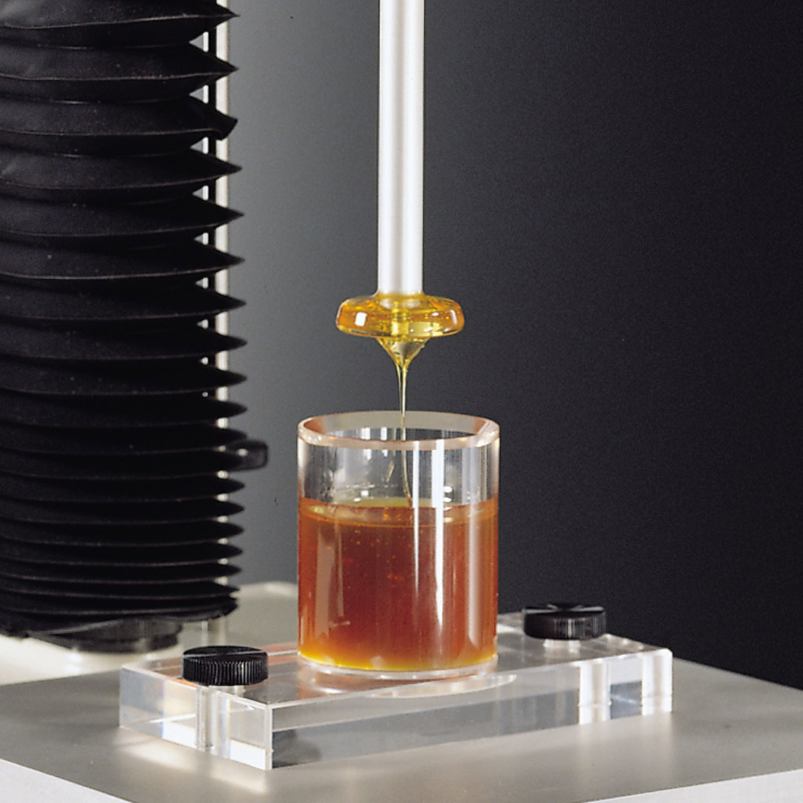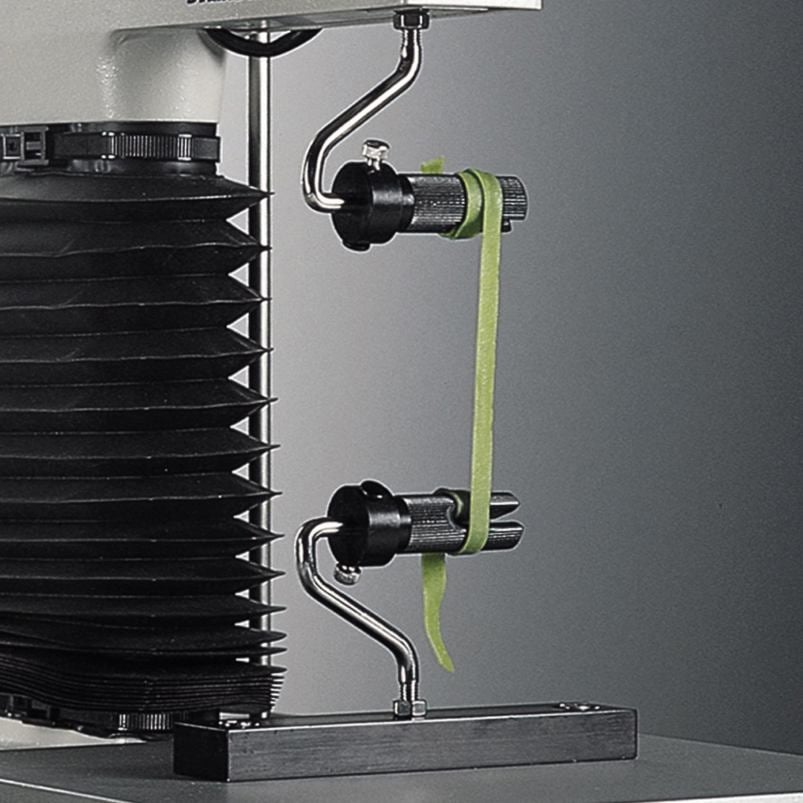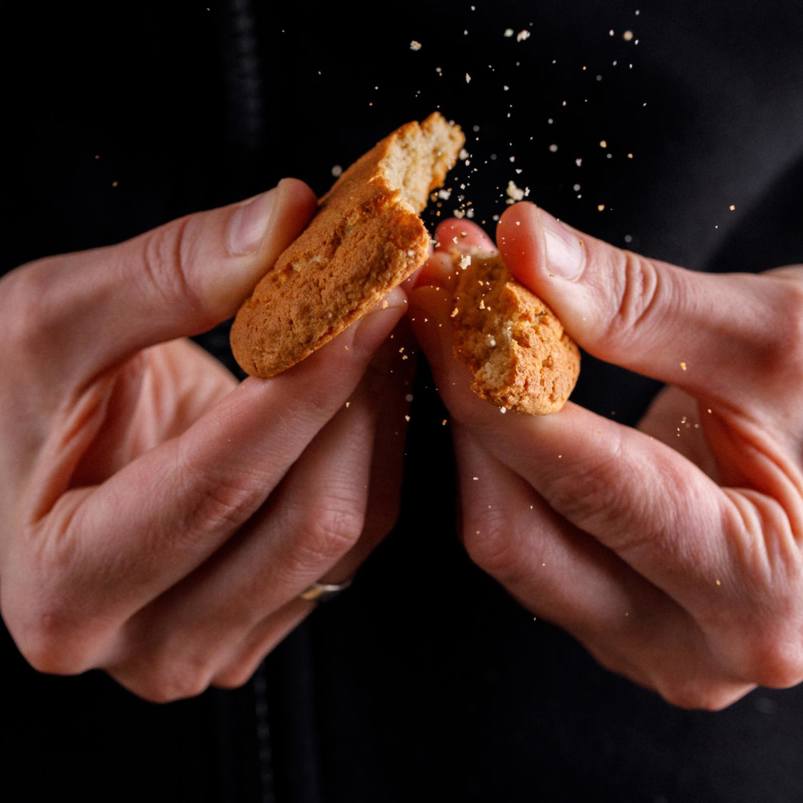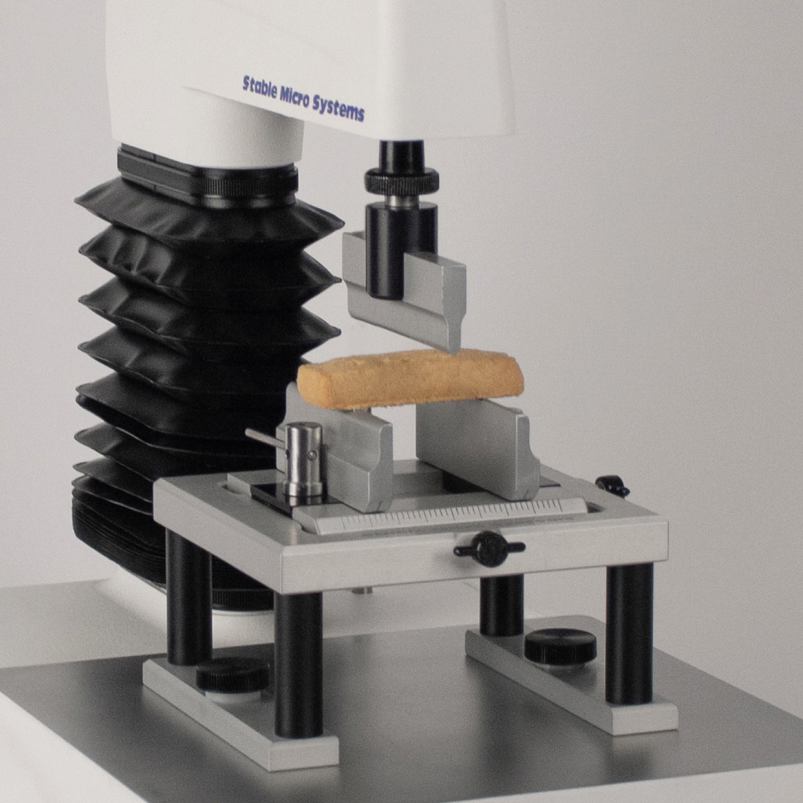
How a Texture Analyser works
Understand what a Texture Analyser is and how it is applied for texture assessment.
What is a Texture Analyser and how does it work?
A Texture Analyser is a texture measurement system that moves in either an up or down direction to compress or stretch a sample.
The travelling arm is fitted with a Load Cell and records the force response of the sample to the deformation that is imposed on it. Force, Distance and Time data is collected and usually presented as a curve on a graph which, when analysed, indicates the texture of the sample.
Texture Analysers provide the operators with ultimate control and test flexibility for measuring all types of physical/textural properties of solid and semi-solid systems by their ability to accommodate a wide range of probes and attachments (devices to test food structure) that can be attached to the Texture Analyser base and/or arm.
A Texture Analyser is the source of ultimate objective quantification of whether the food is ‘more crispy, firm, sticky, etc. as a result of a new technique or the addition of a certain ingredient to the formulation.
Here are some examples of an imitative test and a typical graph produced from Exponent Connect software.
























What does a Texture Analyser measure?
Depending upon the chosen probe or attachment, the Texture Analyser can perform compression, extension, cutting, extruding, bending and shearing tests – and in doing so, can measure properties such as fracturability, chewiness, stickiness, consistency, bite force and springiness, to name a few.
There is a vast range of physical properties which can be measured by a Texture Analyser. Visit our Texture Properties page to learn more.
Operational Options
All Stable Micro Systems Connect series Texture Analysers are capable of operation by the Control Panel as standard, as well as by a desktop or laptop PC. In addition, they may also be operated from a mobile phone or tablet using the Browser Interface.

Whether you are new to texture analysis/mechanical property measurement, are an experienced super user, or have specific requirements, you have the flexibility to choose how you want to interact with your instrument.
We offer three ways to run your instrument. Each can be used independently from each other, or you can have a combination of all three.
Standalone operation by Control Panel
The Touchscreen is supplied with all of our range and is capable of controlling your instrument and running simple tests.
It is ideal for providing a quick result with some single point analysis, such as Maximum Forces in both compression and tension tests. It will even give you a visual summary curve of your test, providing a quick check to see that your test has performed as you expected. Using the Touchscreen, you will be able to:
- Control and calibrate your instrument and run simple tests
- Access a summary graph for each test and see a quick tabulated result
- Transfer files to Exponent Connect software for further analysis (if required)
- Operate your instrument in another language
- Control security settings for operators and set up network connections (if required).
Connect to server via a Browser Interface
The Browser Interface* is also supplied with all of our Texture Analysers and has many of the capabilities provided within the Touchscreen Interface.
However, it offers the additional convenience of running on your tablet, phone or laptop. This means that you no longer need a dedicated PC connected to your Texture Analyser. Just open your instrument’s web view, run your tests and analyse your data back at your desktop with Exponent Connect or Exponent Connect Lite software.
Using the Browser Interface, you will be able to:
- Operate your instrument using your own device on a network connection
- Setup and control multiple instruments using one device, either nearby or remotely from your desktop, so that your laboratory staff can be running tests that you have configured
- Control and calibrate your instrument and run simple tests
- Transfer files to Exponent Connect for further analysis (if required)
*A network connection is required.
Direct connection via Exponent Connect software
Exponent Connect software is our feature-rich texture analysis package of choice for the professional or advanced operator.
It provides full control and customisation, ultra-fast data collection (up to 2000 points per second) and a huge range of data analysis features for your every application. This fully established software package provides long term flexibility of operation and analysis with new features constantly added to expand the wealth of testing opportunities.
Using Exponent Connect software you will be able to:
- Have full control of how you want to test your products
- Customise your data analysis and presentation formats
- Collect data from a wide range of other measurement devices simultaneously
- Communicate to LIMS
- Add Enhanced Security Options for all operators
- Connect to your instrument locally or install it on a desktop in your office and operate your instrument via network*.
*A network connection is required.
For use with the TA.XTExpressC Texture Analyser model, and for texture solutions that do not require any other additional data collection devices connected to the Texture Analyser, Exponent Connect Lite may be a simpler option for your application.
Why measure texture?
Successful production and quality control rely on the ability to measure and test at every stage of the manufacturing process. Without accurate measurement, consistent control is not possible.
A Texture Analyser is an indispensable tool for quantifying the texture and physical properties of a ‘gold standard’ product, providing a reliable benchmark for future comparison during manufacture. This process is essential to ensuring consistent textural quality. It can also be used to evaluate and compare your product against those of competitors, offering valuable insights for maintaining a competitive edge.
Learn more about why you should measure texture.
Typical texture analysis tests








Depending upon the chosen probes or texture analysis grips and attachments used, the Texture Analyser is capable of performing a wide variety of test types.
One of the most common applications of a Texture Analyser is measuring the hardness of food or testing the firmness of products across a wide range of industries. A historically popular method for this is Texture Profile Analysis (TPA) – a two-cycle compression test that automatically calculates a variety of food texture properties. Learn more about TPA
Texture Technologies, our USA distributor, also gives an excellent overview. Read it here
Where will I use a Texture Analyser?
Texture analysis is most often applied in a practical and transparent way. Core product characteristics are first identified through sensory or consumer studies, then reproduced under controlled, instrument-based conditions for accurate measurement. Texture measurements can be applied in several areas:
Research and development: Used in longer-term studies to understand both micro and macro structures, or to support the creation of new ingredients and unique products.
New product development: Applied in faster, short-term projects to benchmark key attributes. The Texture Analyser supports the design of products tailored to specific consumer markets and helps monitor the effects of formulation changes and shelf life.
Process development: Used in an engineering context to understand key stages of production. Measurements reveal how processing steps affect product quality and how they can be adjusted to achieve the best results. Insights gained at this stage can be transferred directly to factory applications.
In factory settings, texture measurements must be simple, reproducible, and reliable. Using the Texture Analyser on the production line can reduce product waste, minimise downtime, and prevent consumer dissatisfaction caused by non-conformance.
True quality control depends on the ability to measure products against defined standards. If deviations occur, the Texture Analyser helps identify whether changes to formulation or processing are required to bring the product back within acceptable tolerances.
Texture is also critical from the consumer’s perspective: if a product does not feel right, they are unlikely to buy it again. Incorrect physical properties in an ingredient or component can also disrupt processing efficiency, leading to higher waste and downtime.
Ultimately, if a manufacturer cannot consistently supply supermarkets with products that meet expectations, retailers may simply switch to another supplier. A reliable instrument for measuring texture helps avoid these risks, ensuring product quality, consistency, and consumer satisfaction.









